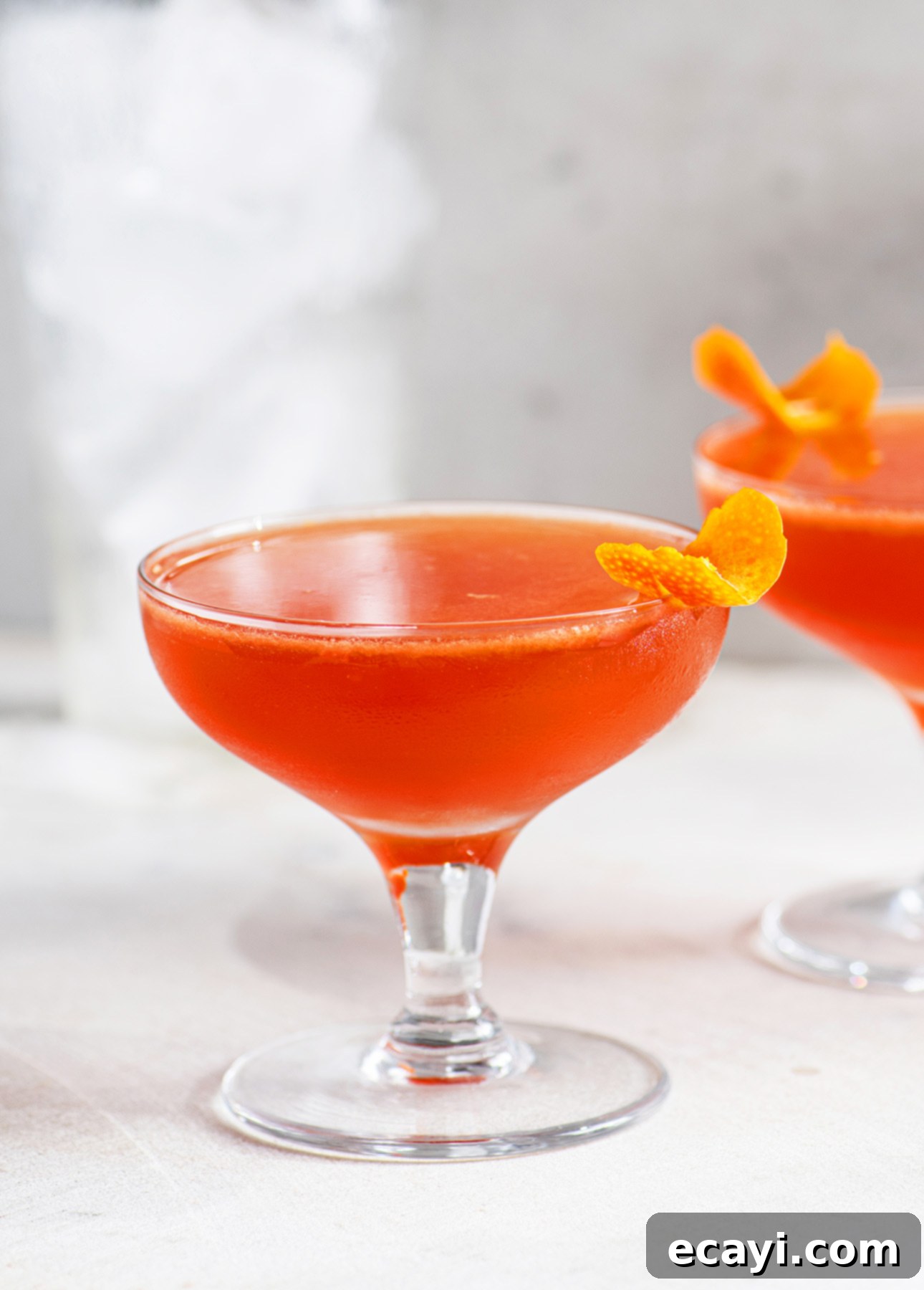The Paper Plane Cocktail: A Modern Classic Recipe You Can Easily Master at Home
Discover the delightful Paper Plane Cocktail, a modern classic that stands out for its elegant simplicity and vibrant flavor profile. Perfect for home bartenders, this sophisticated yet straightforward drink requires no elaborate syrups, obscure bitters, or intricate garnishes. It’s a testament to balance, combining a classic spirit with zesty citrus and intriguing herbal notes. Dive into its fascinating origins and learn how to easily craft this refreshing cocktail right in your own kitchen.
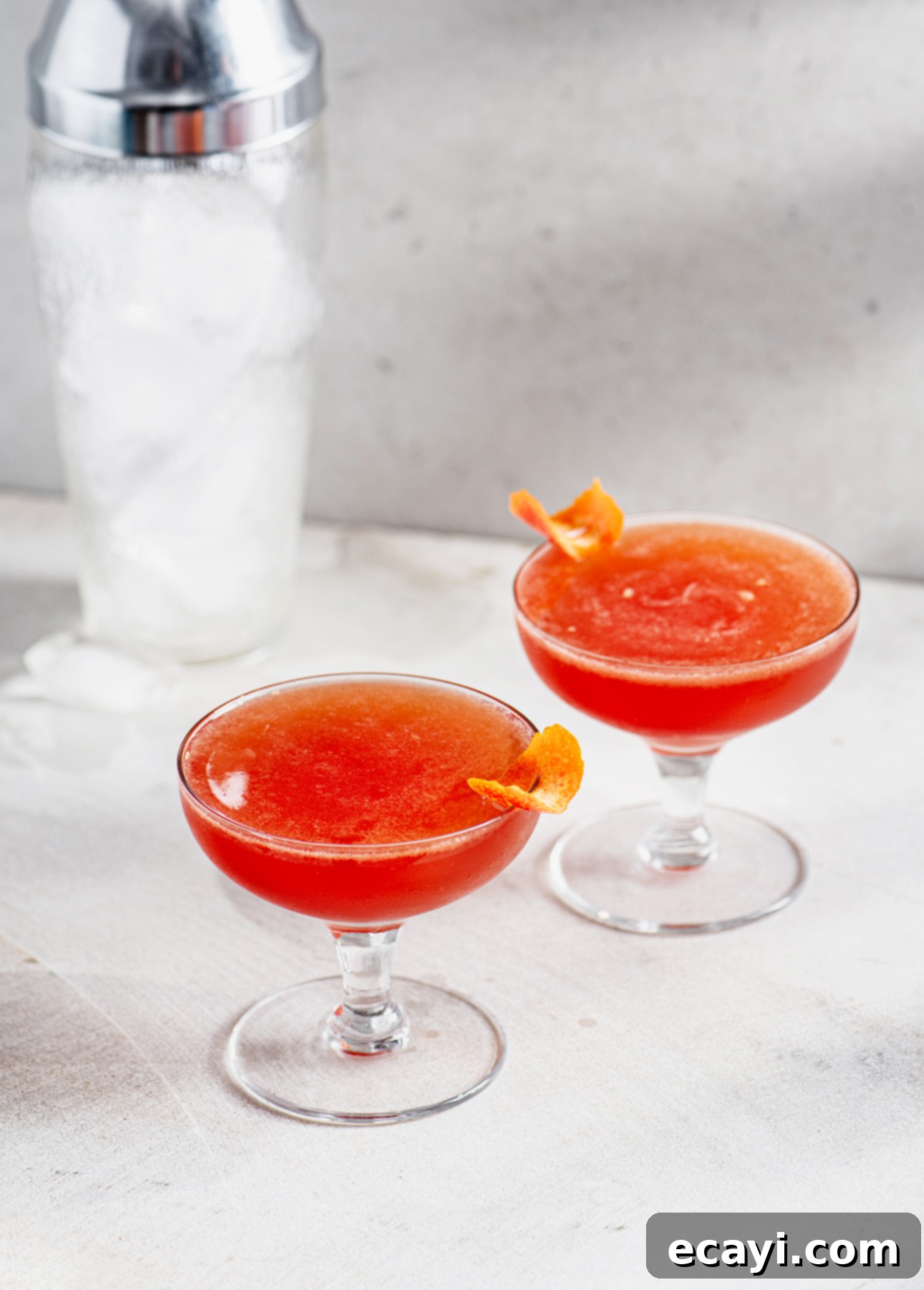
This post may contain affiliate links. As an Amazon Associate and member of other affiliate programs, I earn from qualifying purchases at no extra cost to you. Full disclosure details are provided at the end of this article.
For those who appreciate cocktails with a bright, zesty character, the Paper Plane is a true gem. My personal preference consistently leans towards drinks that offer a refreshing tartness rather than overwhelming sweetness. Citrus fruits are, without a doubt, the quintessential ingredient for achieving this perfect balance in mixology. Whether it’s the beautiful pink hues of a Paloma cocktail or the complex, invigorating notes of a Penicillin cocktail, my go-to libations invariably share one defining trait: a harmonious blend of citrus-forward flavors that tantalize the palate.
My initial encounter with the Paper Plane cocktail was in a charming local establishment that transitions from a bustling coffeeshop by day to a sophisticated cocktail bar by night. The moment I perused its ingredient list—featuring bourbon, fresh lemon juice, vibrant Aperol, and the distinctive Amaro Nonino Quintessentia—I was immediately captivated and knew I had to experience its unique flavor. True to my expectations, it was love at first sip. The Paper Plane delivers a remarkably tight, aromatic, and perfectly sour profile, offering a delightful paradox of being both incredibly refreshing and deeply comforting. It’s a cocktail that truly awakens the senses.
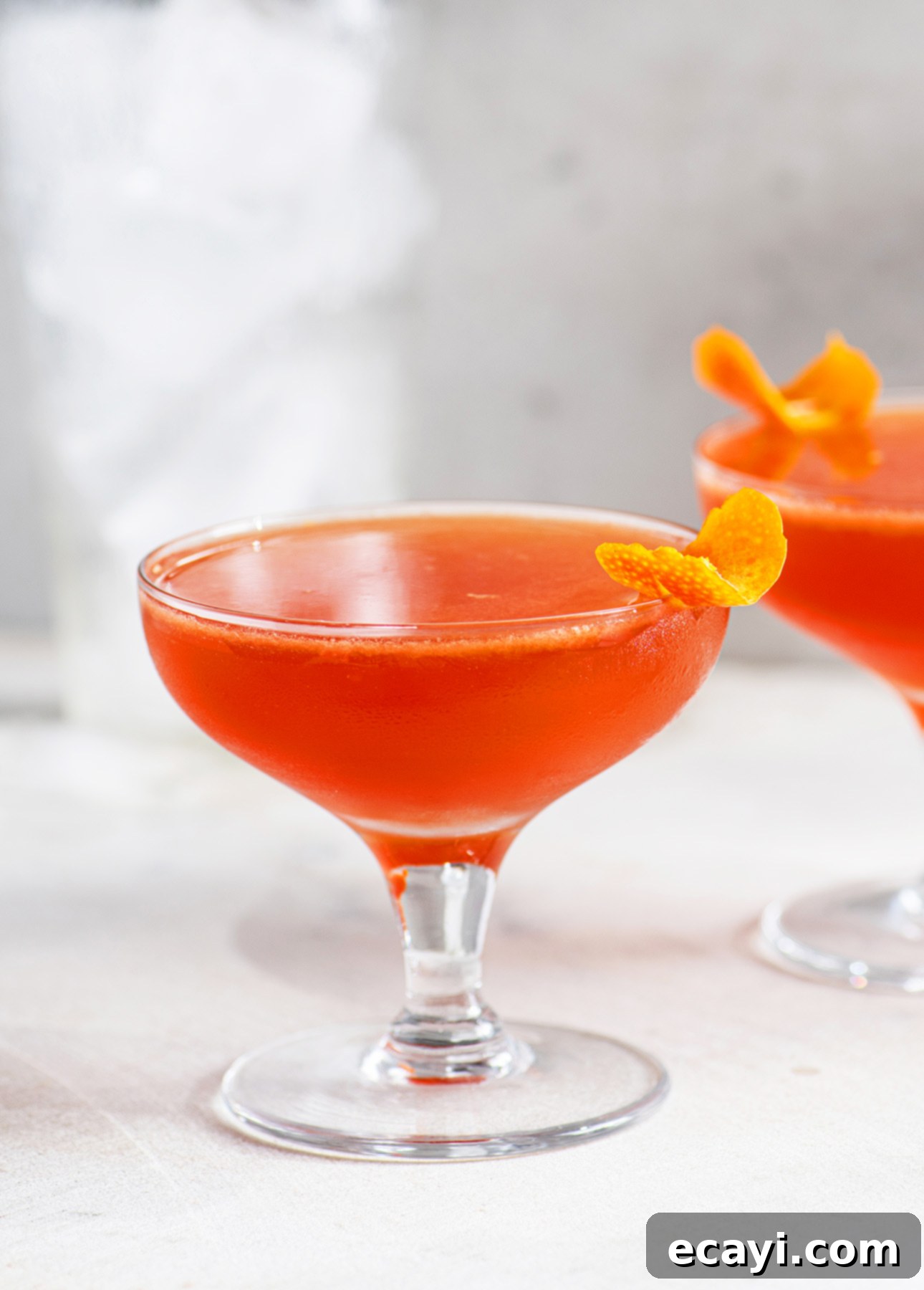
Further delving into its history, I soon uncovered that this brilliant concoction was born from the mind of an iconic figure in modern mixology: Australian bartender Sam Ross. Interestingly, Ross is also the acclaimed creator of another one of my absolute favorite drinks, the Penicillin. His goal with the Paper Plane was to craft a perfectly balanced libation, skillfully intertwining the bright acidity of citrus with the robust character of a classic American spirit and the complex, intriguing nuances of herbal liqueurs. This innovative approach resulted in a cocktail that quickly earned its place among the contemporary classics.
One of the most appealing aspects of the Paper Plane cocktail, and a significant factor in its widespread popularity, is its remarkable ease of preparation. Unlike many intricate craft cocktails that demand homemade syrups, specialized bitters, or elaborate garnishes, the Paper Plane keeps things delightfully simple. The magic lies in its straightforward 1:1:1:1 ratio: simply combine equal parts high-quality bourbon, tart lemon juice, bittersweet Aperol, and aromatic Amaro Nonino. Shake these ingredients vigorously with ice, then strain into your chosen glassware, and you’re ready to savor this exceptional drink. It truly embodies the principle that great cocktails don’t have to be complicated.
Helpful Tips for Crafting the Perfect Paper Plane Cocktail
Achieving the ideal Paper Plane cocktail is all about precision and quality. Here are some expert tips to ensure your drink is as exceptional as it should be:
Fresh Ingredients are Key
Always use freshly squeezed lemon juice. Bottled lemon juice simply doesn’t compare in terms of brightness and acidity, which are crucial for balancing the other strong flavors in this cocktail. A small hand juicer is a worthwhile investment for any home bar enthusiast.
Proper Chilling and Dilution
Shaking the cocktail vigorously with plenty of ice for at least 15-20 seconds is essential. This not only chills the drink thoroughly but also provides the necessary dilution, softening the alcohol and melding the flavors harmoniously. Don’t be afraid to use a good amount of ice in your shaker.
The Right Glassware
While any cocktail glass will do, serving the Paper Plane in a chilled coupe or a Nick & Nora glass enhances the drinking experience. These glasses elevate the visual appeal and allow the aromas to gather beautifully, presenting the cocktail in its best light.
Garnish for Aroma (Optional but Recommended)
Although the Paper Plane traditionally goes ungarnished, a thinly sliced orange peel, expressed over the drink to release its oils, adds an extra layer of aromatic complexity that truly complements the Aperol and Amaro Nonino. A simple twist or a small wedge can make a big difference.
Who Invented the Iconic Paper Plane Cocktail?
The Paper Plane cocktail was ingeniously crafted by Australian bartender Sam Ross, an influential figure in the modern cocktail renaissance, sometime around 2008. Ross, renowned for his innovative approach and responsible for other beloved drinks like the Penicillin, developed this particular recipe at the behest of his friend and fellow industry professional, Toby Maloney. The drink was specifically conceived for the inaugural cocktail menu of Chicago’s acclaimed bar, The Violet Hour, an establishment known for its sophisticated ambiance and meticulously curated drink offerings. Its instant success there cemented its place in the pantheon of contemporary classic cocktails.
The Intriguing Story Behind the Paper Plane Cocktail’s Name
The naming of the Paper Plane cocktail comes with a wonderfully quirky and memorable anecdote. As detailed in a fascinating article from Punch Drink, Sam Ross, after perfecting the drink, decided to christen it after the wildly popular 2007 hit song “Paper Planes” by M.I.A. This choice not only gave the cocktail a cool, contemporary edge but also hinted at its soaring, dynamic flavor profile. The story gets even better: Ross famously relayed the freshly minted recipe to his friend Toby Maloney in the wee hours of the morning—specifically, through a “slightly buzzed 3 a.m. voicemail.” When Maloney later listened to the message, a misinterpretation occurred, and he heard “The Paper Airplane” instead. This charming mix-up explains why, to this day, the cocktail is occasionally referred to by both names, “Paper Plane” and “Paper Airplane,” adding to its unique lore and appeal.
What is the Flavor Profile of the Paper Plane Cocktail?
The Paper Plane cocktail offers a symphony of flavors, meticulously balanced from its four distinct ingredients: the rich, full-bodied notes of bourbon, the bright and zesty tang of fresh lemon juice, the bittersweet and citrusy nuances of Aperol, and the complex, aromatic depth of Amaro Nonino, an exquisite Italian herbal liqueur. Each component is undeniably potent and flavorful on its own, but when combined, they create a truly harmonious and refreshing experience that is greater than the sum of its parts. Expect a multifaceted taste sensation: the Paper Plane is elegantly bitter, vibrantly sour, delicately herbal, and wonderfully fruity, all perfectly intertwined. Its intricate yet approachable profile makes it an excellent choice for those who appreciate a drink with depth without being overly sweet. If you are a fan of classic Whiskey Sours or other well-balanced, spirit-forward cocktails with a citrus kick, the sophisticated and invigorating taste of the Paper Plane will undoubtedly captivate your palate.
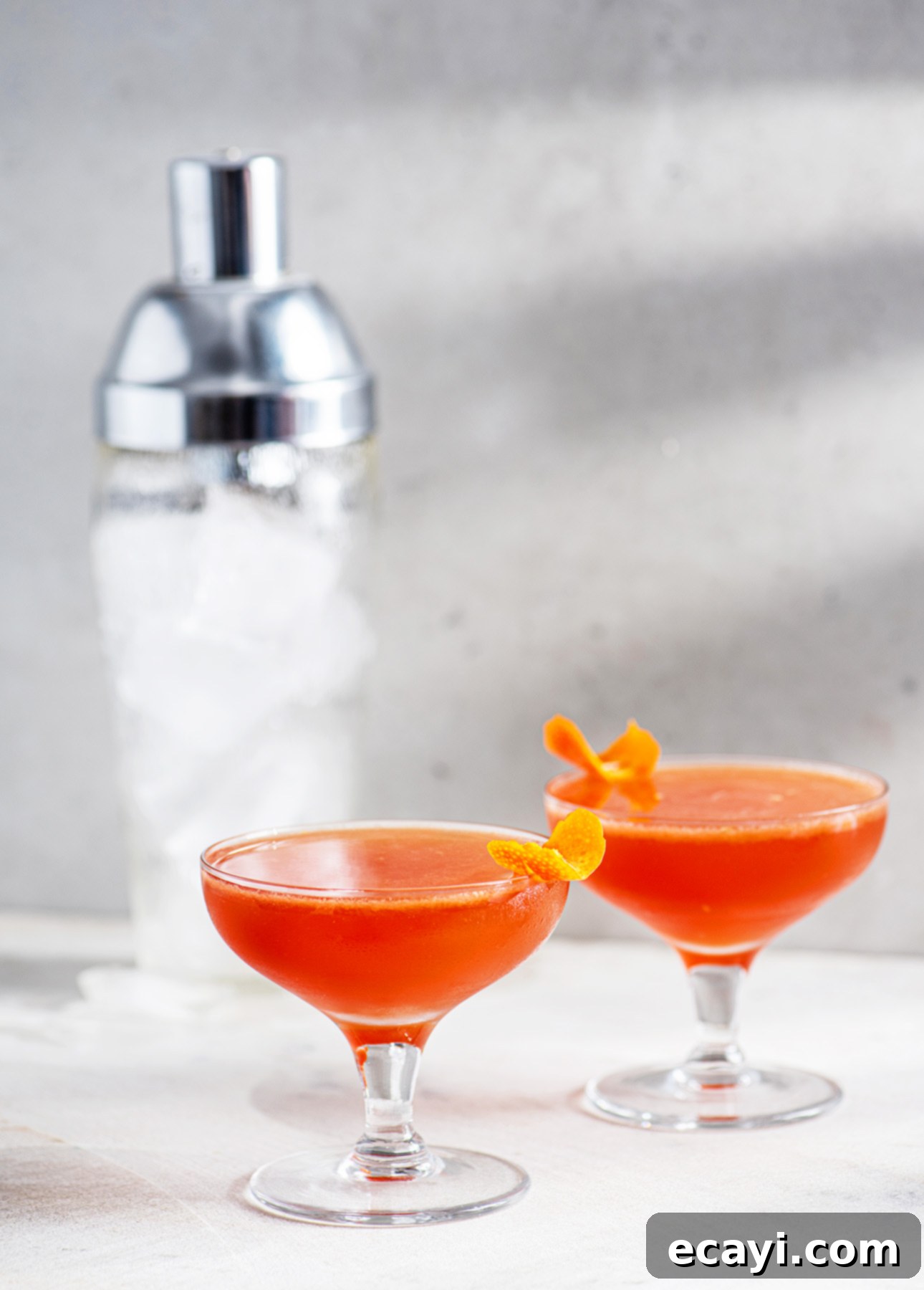
Choosing the Best Bourbon for Your Paper Plane Cocktail
When it comes to selecting the bourbon for your Paper Plane cocktail, the good news is that you generally have a wide range of options, and most quality bourbons will yield an excellent result. The cocktail’s assertive citrus and amaro components are quite forgiving, allowing the bourbon to serve as a foundational, full-bodied spirit without necessarily requiring a top-shelf expression. While serious bourbon aficionados might advocate for specific brands that complement the other ingredients perfectly, for home bartenders, accessibility and personal preference play a significant role. If you happen to have another American whiskey on hand, such as a rye or even a Tennessee whiskey, it can also work as a suitable substitute, though it will subtly alter the cocktail’s characteristic profile. The key is to use a bourbon you enjoy drinking on its own, as its quality will still shine through.
Understanding Amaro Nonino Quintessentia: A Key Ingredient
At the heart of the Paper Plane cocktail’s distinctive character lies Amaro Nonino Quintessentia, a renowned Italian amaro, or bitter liqueur. This exceptional spirit is crafted from a base of aged grappa, meticulously infused with a secret blend of herbs, spices, fruits, and other botanicals. The result is a truly unique flavor profile that masterfully balances bitterness with a subtle sweetness, unveiling layers of vanilla, warm spices, rich honey, and bright orange citrus notes. With an alcohol content of 35% ABV, it offers a surprising smoothness that makes it delightful not only in cocktails but also as a standalone digestif, often enjoyed simply over ice with a fresh orange slice.
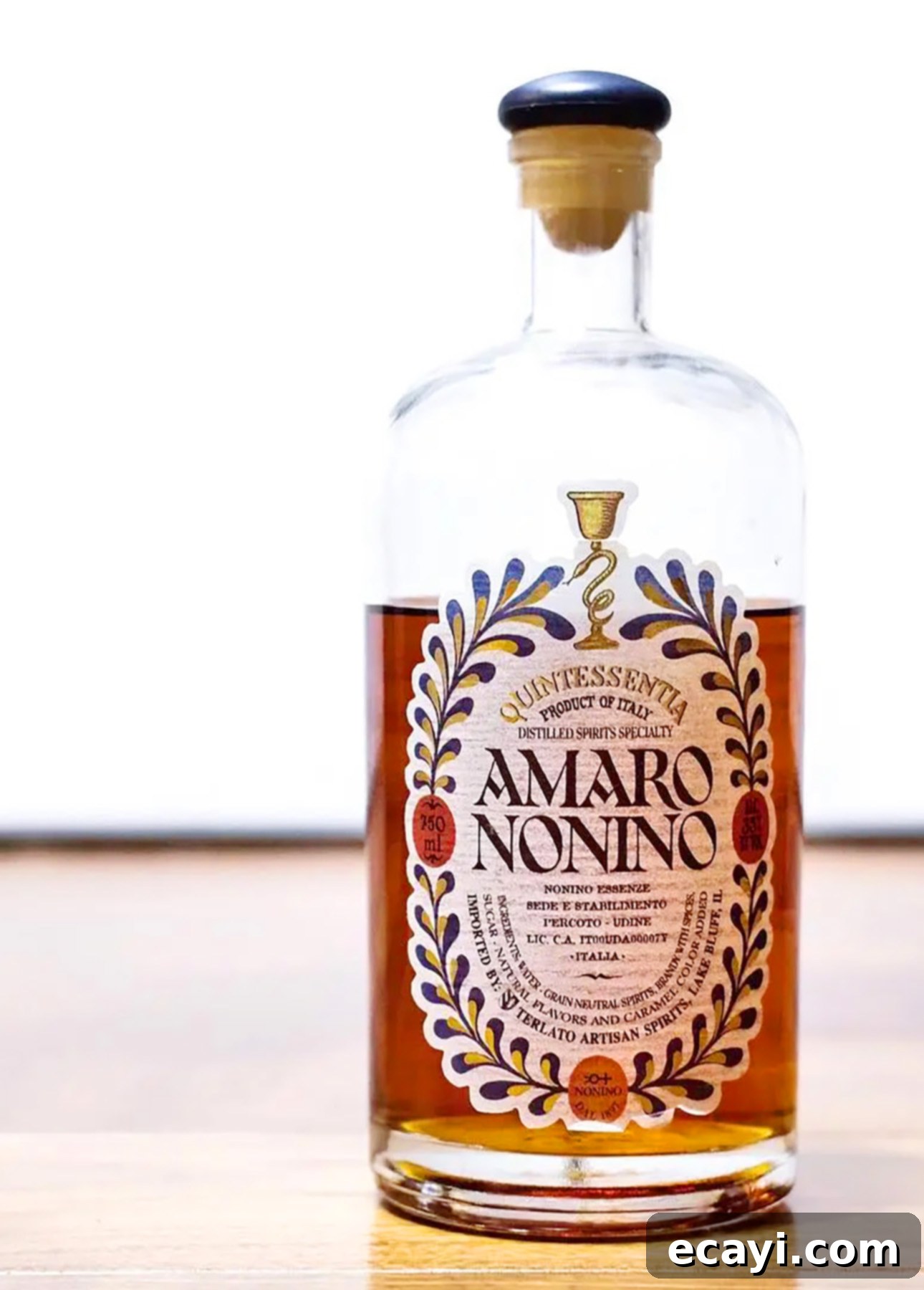
While Amaro Nonino has been appreciated by connoisseurs of Italian liqueurs since its inception in 1992, it was the meteoric rise of the Paper Plane cocktail that truly propelled it into the spotlight and established it as an indispensable bottle in any serious home or professional bar. Elisabetta Nonino, a proud member of the illustrious Italian family whose distillation heritage dates back to 1897, openly acknowledges the cocktail’s profound impact. She credits the Paper Plane for significantly boosting Amaro Nonino’s global recognition, stating, “Thanks to Sam Ross, now Amaro Nonino is a must-have in any cocktail bar.” This modern classic cocktail effectively transformed an esteemed regional liqueur into a worldwide sensation, highlighting its versatility and appealing complexity to a new generation of drinkers.
Amaro Nonino Substitutions: What Works (and What Doesn’t)
Given its highly distinctive and nuanced flavor profile, substituting Amaro Nonino in a Paper Plane cocktail is a delicate matter. While other liqueurs might technically be “amari” or herbal, they rarely replicate the exact balance of bitter, sweet, herbal, and citrus notes that Amaro Nonino brings to the drink. For instance, popular options like Campari or Aperol, despite being Italian bitter liqueurs, possess significantly different flavor characteristics—Campari is much more intensely bitter, while Aperol is lighter and sweeter—meaning they cannot be directly interchanged without fundamentally altering the essence of the Paper Plane.
We understand that Amaro Nonino can sometimes be a challenge to locate, and its premium quality often comes with a higher price tag. If you find yourself in a situation where this specific amaro is unavailable, there are a few worthy alternatives that can still produce a delicious, albeit slightly different, version of the cocktail. The closest recommended substitutes are Amaro Averna and Amaro Tosolini. Both offer a rich, complex herbal bitterness that can approximate Nonino’s role, though each has its own unique nuances. Surprisingly, for a more accessible (though admittedly less traditional) option, the German herbal liqueur Jägermeister can also function as an emergency substitute. While its flavor profile is distinctly bold and licorice-forward, its strong herbal and spiced notes can provide a comparable aromatic depth, creating an interesting, if not entirely authentic, variation of the Paper Plane. Experimentation is encouraged, but be prepared for a shift in the cocktail’s signature taste.
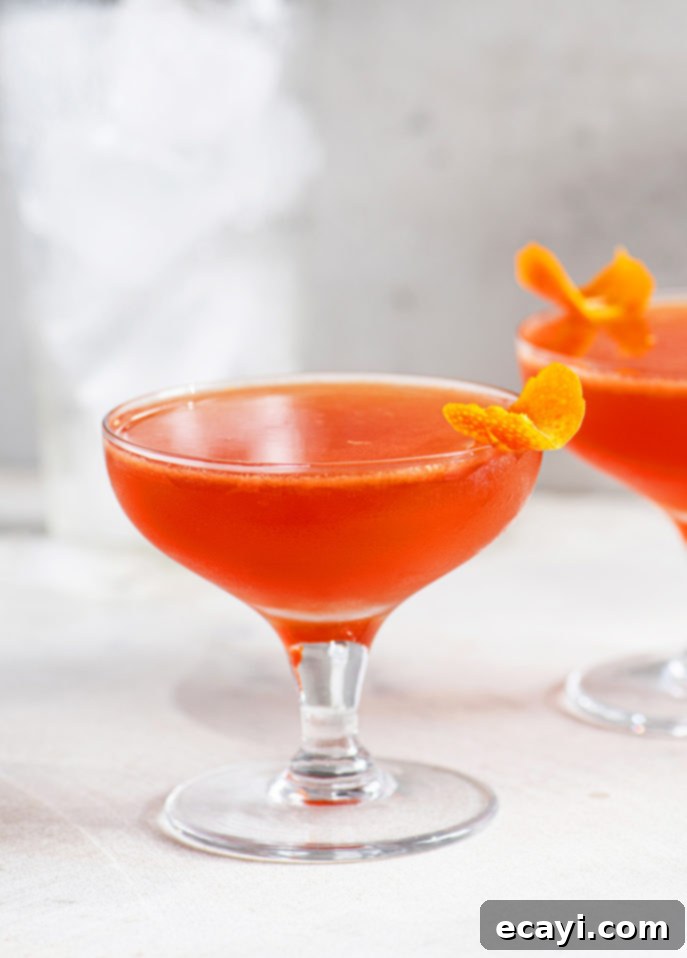
Pin Recipe
Classic Paper Plane Cocktail Recipe
Ingredients
- 1 oz bourbon
- 1 oz Aperol
- 1 oz Amaro Nonino Quintessentia (see note for substitutions)
- 1 oz freshly squeezed lemon juice
Instructions
-
Combine bourbon, Aperol, Amaro Nonino, and freshly squeezed lemon juice into a cocktail shaker. Fill the shaker completely with ice, then shake vigorously for approximately 15-20 seconds until thoroughly chilled and well-diluted.
-
Double strain the mixture into a chilled coupe or Nick & Nora glass. For an aromatic touch, express a thinly sliced orange peel over the drink and use it as a garnish, if desired. Serve immediately and savor!
-
NOTE ON AMARO NONINO SUBSTITUTIONS: While Amaro Nonino Quintessentia is integral to the classic Paper Plane taste, if it’s unavailable, acceptable substitutes include Amaro Averna or Amaro Tosolini. For a more unconventional but surprisingly effective alternative, the German herbal liqueur Jägermeister can be used, offering a different but still herbaceous and spiced flavor profile.
Did you make this?
Tell me how you liked it! Leave a comment or take a picture and tag it with @foodnouveau on Instagram.
Affiliate Disclosure: This content is a participant in various affiliate advertising programs, including the Amazon Associates Program, designed to provide a means for sites to earn advertising fees by linking to Amazon.com and affiliated sites.
Please note that if you click on an affiliate link and make a purchase, I may receive a commission or referral fee from the retailer, at absolutely no additional cost to you. These commissions help support the maintenance and creation of new, valuable content for this blog, allowing me to continue sharing recipes and insights. Your support is greatly appreciated! For a comprehensive understanding of my advertising practices, please refer to our full Disclosure Policy.
